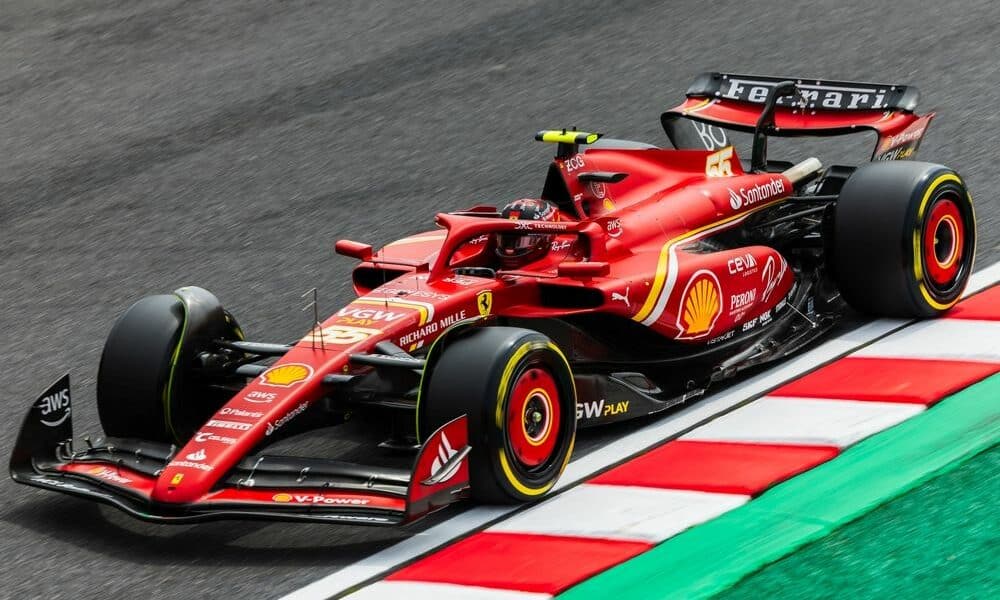Zé Felipe’s Simplicity vs. João Guilherme’s Luxury in Digital Influence
Zé Felipe and João Guilherme, sons of sertanejo legend Leonardo, stand as contrasting figures in Brazil’s rapidly evolving digital influence market. While Zé Felipe embraces simplicity and family values, João Guilherme gravitates toward luxury and modernity. Their differing lifestyles provide insights into the dynamics of digital marketing, a sector that reached a staggering R$10 billion in 2024. With distinct branding approaches, the brothers attract diverse audiences and showcase the versatility of the influence market in Brazil.
Zé Felipe, aged 26, has made his mark as a prominent sertanejo artist, gaining a reputation for his authenticity and down-to-earth persona. In contrast, João Guilherme, 22, capitalizes on a more aspirational image, blending luxury, technology, and global trends. This stark contrast reflects broader societal shifts in consumer preferences, where tradition and innovation coexist, fueling growth in both familial and high-end marketing niches.
The rise of Zé Felipe in Brazilian sertanejo
Zé Felipe’s career began in the footsteps of his father, Leonardo, one of the pioneers of sertanejo music. With hits like “Toma Toma Vapo Vapo,” Zé Felipe quickly carved out his niche, blending traditional sertanejo with contemporary sounds. His authenticity resonates deeply with fans, many of whom value his relatable content over flashy displays of wealth.
Despite a net worth of R$110 million, Zé Felipe is known for his modest lifestyle. Notably, he has opted against obtaining a driver’s license, an unusual decision in a world often associated with material excess. His social media platforms, with over 50 million combined followers, highlight family life, personal moments, and humorous skits, reinforcing his connection with audiences who prioritize emotional and relatable content.
João Guilherme’s luxury-driven approach
João Guilherme’s career trajectory diverges sharply from that of his brother. Having begun as an actor in youth-oriented television, João has transitioned into a role as a digital influencer. With over 20 million followers, he crafts a persona that emphasizes sophistication, luxury, and innovation.
A prime example of João’s branding is his recent acquisition of a Volvo EX30 electric car, valued at R$230,000. The vehicle, known for its sustainability features such as recycled interiors and a panoramic sunroof, reflects his alignment with global eco-conscious trends. This purchase underscores João’s ability to merge high-end aspirations with emerging market demands, appealing to affluent and environmentally conscious consumers.
How digital influence drives their careers
Both brothers leverage digital platforms as key pillars of their success. Zé Felipe’s content is often family-centric and informal, resonating with a broad demographic seeking relatable figures. João, on the other hand, invests in visually polished posts, highlighting his luxury purchases and exclusive experiences.
Influence marketing in Brazil thrives on this diversity. Studies show that 70% of consumers trust influencer recommendations over traditional advertisements. This trust fuels the success of Zé Felipe and João Guilherme, whose distinct approaches cater to varying consumer preferences and expand their brand partnerships.
Consumer behavior shaping the influence market
- Trust in authenticity: Audiences increasingly favor influencers like Zé Felipe, who embody accessibility and emotional resonance.
- Aspirational appeal: João Guilherme’s polished content aligns with a growing desire for exclusivity and innovation.
- Family-focused engagement: Campaigns featuring familial connections see higher engagement rates, benefiting figures like Zé Felipe.
- Sustainability trends: João’s eco-conscious choices reflect a shift toward responsible consumption among younger demographics.
These trends underline the dynamic nature of Brazil’s influence market, where authenticity and aspiration coexist.
Leonardo’s legacy and its impact on his sons
Leonardo’s legacy as a sertanejo icon laid the foundation for Zé Felipe and João Guilherme’s careers. With an estimated net worth of R$400 million, Leonardo’s influence extends beyond music, shaping the cultural and professional trajectories of his sons. Zé Felipe inherited his father’s musical talents, continuing the family’s sertanejo legacy, while João carved a unique path in digital influence.
Their shared lineage offers a competitive edge, allowing both brothers to leverage familial recognition while developing distinct personal brands. This dynamic underscores the significance of legacy in modern entertainment and influence.
The economic power of influence marketing
The influence marketing sector in Brazil has experienced exponential growth, driven by changing consumer behaviors and technological advancements. In 2024 alone, the market reached R$10 billion, with a notable 18% increase in luxury-related campaigns. This growth highlights the effectiveness of influencers like João Guilherme in promoting premium products, alongside the enduring appeal of relatable figures like Zé Felipe.
- Luxury endorsements: João Guilherme’s collaborations with high-end brands drive growth in the premium market segment.
- Family-oriented campaigns: Zé Felipe’s relatable content supports brands seeking emotional connections with consumers.
- Cross-generational appeal: Both brothers demonstrate the potential for influence marketing to reach diverse age groups.
Fascinating details about Zé Felipe and João Guilherme
- Zé Felipe’s hit song “Toma Toma Vapo Vapo” became a cultural phenomenon, accumulating millions of streams across platforms.
- João Guilherme’s involvement in sustainability, highlighted by his Volvo EX30 purchase, aligns with global eco-trends.
- The brothers’ combined social media following exceeds 70 million, reflecting their significant digital reach.
A study in contrasts: Zé Felipe vs. João Guilherme
Zé Felipe and João Guilherme exemplify how contrasting lifestyles can coexist and thrive within Brazil’s influence market. While Zé Felipe’s relatability appeals to middle-class families, João’s luxury-driven persona attracts aspirational consumers. This duality underscores the importance of diversified branding strategies in modern marketing.

Zé Felipe and João Guilherme, sons of sertanejo legend Leonardo, stand as contrasting figures in Brazil’s rapidly evolving digital influence market. While Zé Felipe embraces simplicity and family values, João Guilherme gravitates toward luxury and modernity. Their differing lifestyles provide insights into the dynamics of digital marketing, a sector that reached a staggering R$10 billion in 2024. With distinct branding approaches, the brothers attract diverse audiences and showcase the versatility of the influence market in Brazil.
Zé Felipe, aged 26, has made his mark as a prominent sertanejo artist, gaining a reputation for his authenticity and down-to-earth persona. In contrast, João Guilherme, 22, capitalizes on a more aspirational image, blending luxury, technology, and global trends. This stark contrast reflects broader societal shifts in consumer preferences, where tradition and innovation coexist, fueling growth in both familial and high-end marketing niches.
The rise of Zé Felipe in Brazilian sertanejo
Zé Felipe’s career began in the footsteps of his father, Leonardo, one of the pioneers of sertanejo music. With hits like “Toma Toma Vapo Vapo,” Zé Felipe quickly carved out his niche, blending traditional sertanejo with contemporary sounds. His authenticity resonates deeply with fans, many of whom value his relatable content over flashy displays of wealth.
Despite a net worth of R$110 million, Zé Felipe is known for his modest lifestyle. Notably, he has opted against obtaining a driver’s license, an unusual decision in a world often associated with material excess. His social media platforms, with over 50 million combined followers, highlight family life, personal moments, and humorous skits, reinforcing his connection with audiences who prioritize emotional and relatable content.
João Guilherme’s luxury-driven approach
João Guilherme’s career trajectory diverges sharply from that of his brother. Having begun as an actor in youth-oriented television, João has transitioned into a role as a digital influencer. With over 20 million followers, he crafts a persona that emphasizes sophistication, luxury, and innovation.
A prime example of João’s branding is his recent acquisition of a Volvo EX30 electric car, valued at R$230,000. The vehicle, known for its sustainability features such as recycled interiors and a panoramic sunroof, reflects his alignment with global eco-conscious trends. This purchase underscores João’s ability to merge high-end aspirations with emerging market demands, appealing to affluent and environmentally conscious consumers.
How digital influence drives their careers
Both brothers leverage digital platforms as key pillars of their success. Zé Felipe’s content is often family-centric and informal, resonating with a broad demographic seeking relatable figures. João, on the other hand, invests in visually polished posts, highlighting his luxury purchases and exclusive experiences.
Influence marketing in Brazil thrives on this diversity. Studies show that 70% of consumers trust influencer recommendations over traditional advertisements. This trust fuels the success of Zé Felipe and João Guilherme, whose distinct approaches cater to varying consumer preferences and expand their brand partnerships.
Consumer behavior shaping the influence market
- Trust in authenticity: Audiences increasingly favor influencers like Zé Felipe, who embody accessibility and emotional resonance.
- Aspirational appeal: João Guilherme’s polished content aligns with a growing desire for exclusivity and innovation.
- Family-focused engagement: Campaigns featuring familial connections see higher engagement rates, benefiting figures like Zé Felipe.
- Sustainability trends: João’s eco-conscious choices reflect a shift toward responsible consumption among younger demographics.
These trends underline the dynamic nature of Brazil’s influence market, where authenticity and aspiration coexist.
Leonardo’s legacy and its impact on his sons
Leonardo’s legacy as a sertanejo icon laid the foundation for Zé Felipe and João Guilherme’s careers. With an estimated net worth of R$400 million, Leonardo’s influence extends beyond music, shaping the cultural and professional trajectories of his sons. Zé Felipe inherited his father’s musical talents, continuing the family’s sertanejo legacy, while João carved a unique path in digital influence.
Their shared lineage offers a competitive edge, allowing both brothers to leverage familial recognition while developing distinct personal brands. This dynamic underscores the significance of legacy in modern entertainment and influence.
The economic power of influence marketing
The influence marketing sector in Brazil has experienced exponential growth, driven by changing consumer behaviors and technological advancements. In 2024 alone, the market reached R$10 billion, with a notable 18% increase in luxury-related campaigns. This growth highlights the effectiveness of influencers like João Guilherme in promoting premium products, alongside the enduring appeal of relatable figures like Zé Felipe.
- Luxury endorsements: João Guilherme’s collaborations with high-end brands drive growth in the premium market segment.
- Family-oriented campaigns: Zé Felipe’s relatable content supports brands seeking emotional connections with consumers.
- Cross-generational appeal: Both brothers demonstrate the potential for influence marketing to reach diverse age groups.
Fascinating details about Zé Felipe and João Guilherme
- Zé Felipe’s hit song “Toma Toma Vapo Vapo” became a cultural phenomenon, accumulating millions of streams across platforms.
- João Guilherme’s involvement in sustainability, highlighted by his Volvo EX30 purchase, aligns with global eco-trends.
- The brothers’ combined social media following exceeds 70 million, reflecting their significant digital reach.
A study in contrasts: Zé Felipe vs. João Guilherme
Zé Felipe and João Guilherme exemplify how contrasting lifestyles can coexist and thrive within Brazil’s influence market. While Zé Felipe’s relatability appeals to middle-class families, João’s luxury-driven persona attracts aspirational consumers. This duality underscores the importance of diversified branding strategies in modern marketing.











Post Comment